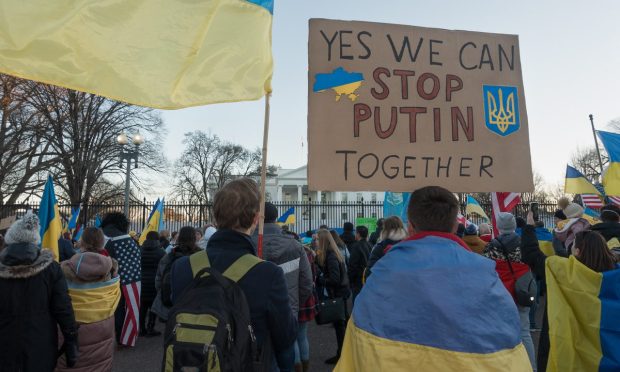US, Europe Levy Russia Sanctions, But All-out SWIFT Ban Not Likely Yet

In times of war — or of armed conflicts that are wars in all but name — payments can be weaponized (after a fashion).
Or, to put it another way, it remains to be seen whether sanctions against Russia, specifically shutting off ties with U.S. banks, will bring enough pressure to bear to dissuade the country from continuing on the path to invading Ukraine.
Liquidity, access to capital markets and trade are the lifeblood of any economy, and they are the means to supporting all manner of activity, even military action.
As has been seen in recent days, a spate of sanctions that are aimed at hobbling Russia economically loom — with a first U.S. volley launched Tuesday (Feb. 22).
What remains to be seen is what happens with SWIFT, the global network that connects far-flung financial services firms.
SWIFT is shorthand for the Society for Worldwide Interbank Financial Telecommunications — a (politically neutral) messaging network that provides connectivity. The network enables financial institutions (FIs) to communicate with one another about transactions, although the network does not itself take on the fund flows themselves.
As to just how Russia can be disconnected: It must be noted that SWIFT is ultimately governed by European law (and not the laws of the U.S.). But through a series of maneuvers, the U.S. can levy sanctions against the network, creating pressure to cut Russia off. In effect, there would be a presumable ripple effect that would effectively disinter Russia from the network. But then again, at least some countries could choose to continue interacting, and transacting, with Russia.
As of Tuesday afternoon, there is no “official” movement to get Russia off the SWIFT network. In a series of what we might term more surgical options, the U.S. has said that it would ban U.S. FIs from processing transactions for some of Russia’s largest banks. The banks would include VTB Bank, Sberbank, VEB and Gazprombank. As CNBC reported Tuesday afternoon, President Joe Biden announced sanctions on VEB and the country’s military bank and said he would also impose sanctions on some of Russia’s oligarchs (and their families).
See also: Biden Mulls Barring US Banks From Processing Transactions From Russian Banks
The U.K. has already announced sanctions on five Russian banks, CNBC said in a separate report.
Thus far, SWIFT is not part of the sanctions strategy, but it may be one kept in reserve. But Biden has said that Tuesday’s announcement represents a “first tranche” of actions aimed at Russia, per CNBC. And that leaves the door open to measures that could ramp up as Russia’s own actions toward Ukraine evolve.
Past is prologue when it comes to SWIFT, especially if the European Union imposes broad based sanctions. Back in 2018, SWIFT banned several Iranian banks, in the wake of U.S. financial and other sanctions against the country amid tensions over a nuclear deal that had been struck in 2015.
Read more: SWIFT Disconnects From Iran’s Banks
The moves by the U.S. Tuesday show an intent to isolate Russia from dollar-denominated trade. And here, at least, is what might happen with the SWIFT network — in theory. Considering, that, per IMF data, allocated reserves globally and, as the BIS has estimated, about 85% of all foreign exchange (FX) transactions occur against the dollar, while 40% of international payments are made in dollars, we get a sense of weight the U.S. has when wielding sanctions — and stopping transactions — as a weapon.
Drilling down a bit (and as measured at the end of 2020), less than 50% of Russia’s exports were sold in U.S. dollars, according to The Moscow Times. But that still leaves a significant exposure to the U.S., and to U.S. banking.
Geopolitics can be nothing if not fluid, and the situation between Russia and Ukraine is about as fraught as can be. It remains to be seen whether the thus-far limited response by the U.S. will broaden in the coming days and weeks.
